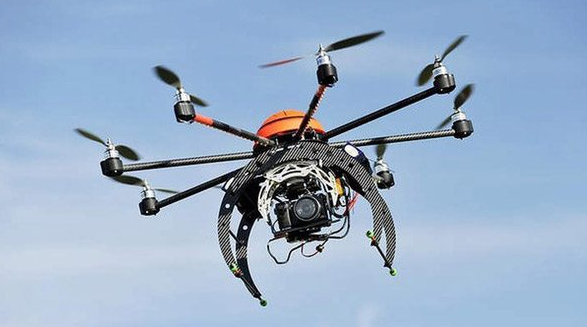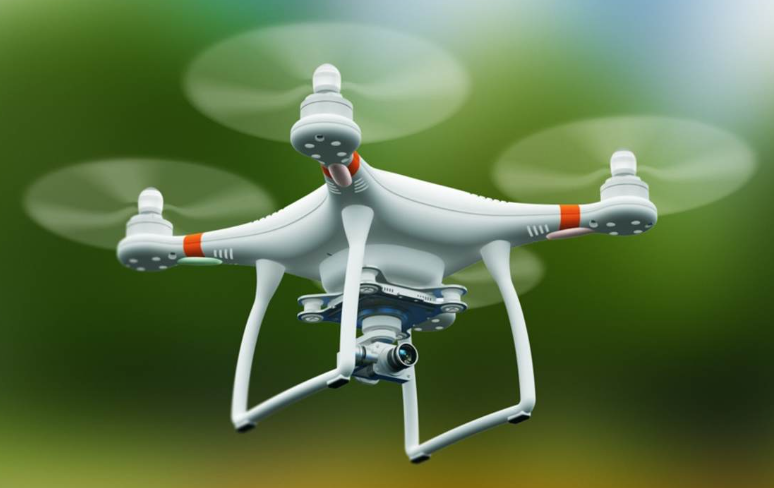Blog
We regularly update articles related to the prototyping and manufacturing industry. You’re welcome to check our previous blogs and subscribe to our newsletter.
Unmanned Aerial Vehicles: Beyond the Horizon
Unmanned Aerial Vehicles (UAVs), popularly termed as drones, trace their roots to the early 20th century, primarily for military purposes. Initially serving as training targets and for reconnaissance, their capabilities burgeoned with tech advancements.

Entering the 21st century, UAVs found roles not only in defense but also in civilian domains. Their appeal is in their unmanned nature, minimizing human risks and boosting efficiency. With the technology’s rapid growth, drones are now deployed for tasks from aerial imagery to farming and crisis response, solidifying their position as a pivotal tech innovation of our era.
Understanding UAV Technology and Key Elements
Delving into Key UAV Components
UAVs, or Unmanned Aerial Vehicles, are constructed using several vital elements. At the heart of these are sensors that offer real-time environmental data to the UAV, assisting in navigation, avoiding obstructions, and collecting data. The propulsion mechanisms, typically a synergy of batteries and motors, grant UAVs the ability to fly and navigate. Communication modules play an indispensable role, facilitating telemetry, data transmission, and remote piloting between the UAV and its control station.
The Significance of AI and Autonomy in UAV Tasks
The integration of AI and autonomy has revolutionized the potential of UAVs. Leveraging advanced algorithms and potent processing, UAVs can undertake intricate operations with minimal human guidance. Such operations encompass autonomous routing, evading obstacles, pinpointing targets, and real-time data interpretation. Through AI, UAVs can assimilate and adapt to their surroundings, navigate unforeseen challenges, and base decisions on comprehensive data, paving the way for enhanced safety and operational efficiency.
Breakthroughs in Material and Structural Design for Superior Performance
Material innovation has set a transformative pace in UAV design paradigms. The adoption of lightweight materials like carbon fiber over traditional heavy metals has augmented flight times and payload capabilities. Refinements in aerodynamics, paired with adaptable designs, have elevated flight proficiency and adaptability. Continuous breakthroughs in this field are redefining the capabilities of UAVs, from extending battery longevity to fortifying resistance against challenging climatic conditions.
UAV Applications
Military and Defense Applications
UAVs have become indispensable tools in modern military and defense operations. Their capabilities extend from reconnaissance and surveillance to targeted strikes, reducing risks to human life and providing real-time intel. Their stealthy nature, combined with advanced sensor technology, allows militaries to conduct covert operations, gather critical information, and execute precision strikes with minimized collateral damage.
Commercial and Industrial Uses
In the commercial realm, UAVs have found myriad applications. Agriculturally, they aid in crop monitoring, pest control, and precision farming, enabling farmers to optimize yields and reduce resource wastage. In surveillance, UAVs offer security and monitoring solutions for vast industrial areas and infrastructure. Additionally, their use in search and rescue missions, especially in challenging terrains, has proven invaluable, speeding up response times and enhancing the chances of successful rescues.

Humanitarian and Environmental Applications
UAVs play a pivotal role in humanitarian efforts, particularly in disaster response. They offer rapid damage assessment, deliver essential supplies to inaccessible areas, and assist in coordinating relief efforts. In the environmental sector, UAVs contribute significantly to wildlife conservation. They monitor animal populations, track migration patterns, and detect poaching activities. By providing an aerial perspective, UAVs offer invaluable insights into habitat changes, assisting conservationists in implementing effective protection strategies.
Regulatory Framework
Overview of UAV Regulations and Restrictions in Different Regions
Unmanned Aerial Vehicles regulations vary widely across regions, reflecting the unique needs and concerns of each jurisdiction. Typically, regulations focus on airspace classification, flight altitude limits, no-fly zones (like airports or critical infrastructures), and UAV weight categories. Many regions require UAV operators to undergo training and certification, and the UAVs themselves may need registration and regular maintenance checks. In some areas, flying UAVs beyond the visual line of sight (BVLOS) or at night demands special permissions.
Challenges and Opportunities in UAV Compliance and Safety
Regulating UAVs poses challenges, especially as the technology rapidly evolves. Striking a balance between innovation and safety is intricate. Over-regulation may stifle advancements, while under-regulation risks public safety. However, these challenges present opportunities. By ensuring robust safety standards, trust in UAV operations can be enhanced, paving the way for broader societal acceptance. Additionally, as regions strive for harmonized regulations, there’s potential for international collaboration, fostering a global framework for UAV operations and innovation.
Current Market Trends
Market Size and Growth Projections
The UAV market is witnessing substantial growth, driven by diverse applications across sectors. Forecasts suggest a consistent upward trajectory, with the market size expected to double in the next five years.
Key Players and Emerging Startups in the UAV Industry
Established players like DJI, Northrop Grumman, and General Atomics dominate the landscape, but emerging startups are introducing disruptive innovations, gaining significant attention.
Investments and Research Driving Innovation
Investment in UAV technology is robust, with both venture capital and government funding fueling research. This investment is nurturing advancements in AI, battery technology, and UAV design, promising even more sophisticated capabilities.
Future of UAVs
Technological Advancements on the Horizon
Expect to see UAV swarming capabilities, enhanced long-endurance flights, and deeper AI integration, allowing for advanced autonomous operations and decision-making.
Anticipated Changes in UAV Regulations
As UAVs become more integrated into everyday life, regulations will likely evolve to accommodate BVLOS operations, increased urban drone activities, and ensure safety amidst growing air traffic.
Potential Societal Impacts and Ethical Considerations
UAV proliferation might raise privacy concerns, alter job landscapes, and necessitate ethical considerations, especially concerning surveillance and data collection, ensuring responsible and beneficial UAV deployment.
CONCLUSION
Unmanned Aerial Vehicles stands at the crossroads of technological innovation and societal evolution. As they weave into the fabric of our daily lives, their potential is only limited by our vision and responsible application. From reshaping industries to pioneering humanitarian efforts, the horizon for UAVs is expansive. Yet, as we chart this unbounded future, balancing progress with ethical considerations and safety remains paramount. The sky is not the limit; it’s just the beginning for UAVs.





